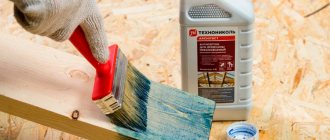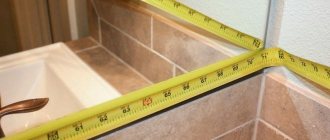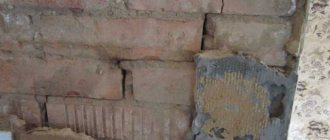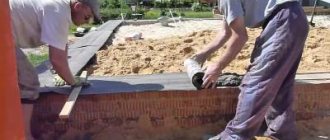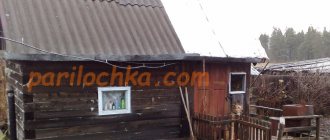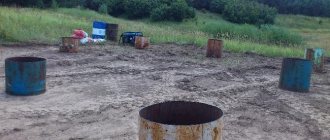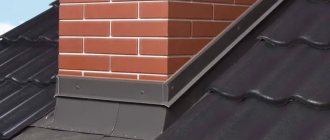Dry construction and finishing mixtures make it possible to obtain masonry and plaster mortars with additional installation and performance properties. Most often, moisture- and frost-resistant materials, heat-resistant materials, with accelerated hardening and a number of others are in demand.
Ceresit brand products consist of a range of materials that meet all the requirements of modern construction technologies. In particular, dry mixes have proven themselves positively from the very beginning of sales in domestic markets.
The correct choice of materials according to their purpose and performance characteristics allows you to implement complex projects with significant savings in costs and working time.
The offered assortment includes a wide selection of primers, grouts for tile coverings, and adhesive compositions that have excellent adhesion to mineral and organic substrates.
- A stable demand has formed for the deep penetration primer Ceresit ST17. Developers and homeowners planning to carry out thermal insulation and finishing façade work are offered to purchase the material.
- A vapor-permeable acrylic primer with deep penetration increases the density of the top layer of concrete walls and improves adhesion to adhesive, paint and plaster coatings.
Ceresit grout for tile joints is presented in several types, which differ from similar materials in increased strength, moisture resistance, a wide selection of colors and stability of operating parameters throughout the entire service life of the tile cladding.
Caramel-colored Ceresit grout and its analogues with other colors can be used with equal success for interior and exterior finishing work, on vertical and horizontal surfaces in a wide range of temperature changes.
What is grout and why is it needed?
The grout is applied to the seams at the final stage of working with the tiles; it will give the coating a complete and pleasant look, because the distance between the tiles, which is left uncovered, will not have a particularly attractive appearance. Grout also performs a number of useful functions:
- If it is applied to the walls, then during shrinkage, which most often concerns new buildings, when the tile moves, the seams allow it to move;
- The seams block access to the openings for moisture to enter, thereby preventing the formation of fungi and mold;
- Improves the adhesion of slabs to a wall or floor covering;
- It helps cover small chips on the tiles, and makes the difference in the size of the tile products less noticeable;
- Ceresit grout colors are presented in large quantities, which helps you choose one that matches the selected material, creating a complete design.
The grout is applied to the seams at the final stage of working with the tiles; it will give the coating a complete and pleasant look.
Grout is a special composition, which is a paste or powder, which is based on white or gray cement, polymers on which the technological properties of the grout depend, as well as various pigments responsible for the shade of the joints.
Many people believe that the main function of grout is decorative, but this is far from true. Since grout is often used in damp areas, it is important that the composition contains antifungal biocides and water-repellent components. If the grout is chosen correctly, it not only performs a decorative function, but prevents moisture and dust from entering the tile joints, and also prevents the development of mold and other pathogens. Grout helps strengthen the tiles; without it, the coating will soon begin to separate from the walls, requiring repeated repairs.
Each of us could observe this phenomenon, for example, in the entrances of new buildings, where after a year or two cosmetic repairs are again required with the replacement of fallen elements.
That is why when choosing a grout, quality plays the first fiddle. A poor-quality mixture will not save you from mold, which easily grows in the seams, especially when it comes to the bathroom, where high humidity and stagnation of warm air create all the conditions for the development of microflora. Mold that has settled in the seams between tiles is extremely difficult to remove. It looks ugly, and its spores are harmful to human health. It is important to remember that the cost of grouting consists of the quality of individual components, each of which affects the aesthetic and functional properties of the tile joints throughout the entire period of operation. This all suggests that you cannot save even on such a seemingly trifle as grout, otherwise you need to be prepared to carry out repeated repairs in 2-3 years.
Application area
The width of the joints that the product can grout varies from 2 to 15 millimeters, this applies to any type of tile. Thus, Ceresit tile grout is used for ceramic, stone, glass tiles, and can be applied to floors and walls.
Due to its high degree of elasticity, it is also used for plasterboard and particle boards that are installed on heated floors. Withstands sudden changes in temperature. It can also be used on the seams of pool tiles.
In general, there are 3 areas of application of the product:
- For narrow joints in the kitchen and bathroom;
- For wide seams where the load is high, i.e. on the floor;
- For seams where resistance to chemicals is needed, it is applicable in laboratories and production facilities.
Due to its high degree of elasticity, it is also used for plasterboard and particle boards that are installed on heated floors.
Technical characteristics of Ceresit
They are divided into 3 groups, differing in composition:
- cement mixtures consisting of white or gray cement with the addition of polymers and pigments;
- silicone, used for sealing seams in rooms with high air humidity, consisting of silicone rubber and acetoxysilane (vulcanizing agent);
- solutions based on epoxy resin, a hardener is added to the composition.
Among Ceresit grouts, the most popular are mixtures of cement with mineral fillers and organic modifiers - CE 33 and CE 40.
Ceresit products are of high quality. Grout for tile work is available in the form of a powder and a paste mixture. Has the following properties:
- enhanced antifungal effect;
- large color range;
- good water repellency, can be enhanced by the use of antifungal impregnation of the same brand;
- resistance to dirt and ease of cleaning;
- resistance to deformation - like epoxy grout, it is highly resistant to abrasion;
- good elasticity, which allows the material to be used in different places and for different sizes of seams;
- tolerates frost and temperature changes well, prevents moisture penetration;
- environmental friendliness.
The material from the Ceresit brand has a high degree of hydrophobicity, expressed by the aquastatic effect, which does not allow moisture to penetrate the grout structure and subsequently prevents tiles from falling off in the bathroom and other places with high humidity.
A large number of colors and shades, the possibility of using mixtures for exterior and interior decoration, elasticity of the material, resistance to bacteria and fungi, use for swimming pools, high water-repellent properties when used with silicone grout - these are the advantages of Ceresit mixtures.
Consumers note one drawback - a change in color as the seam dries. This problem is common to mixtures from any manufacturer. To protect yourself and get the desired design solution, you need to choose a moisture-resistant cement grout, focusing on samples of dried joints displayed on the counters.
Facade plaster 25 kg
It is no wonder why facade plasters using the most original and high-quality materials are so popular today, which include finishing products, for example, facade plaster, building materials, facade protection products, etc. Carrying out facade work at the highest level, OptoStroy specialists equally meticulously evaluate both the quality of the selected materials and the aesthetic implementation of facade plastering projects. The main advantages of buy ceresite plaster:
- High degree of stability, long service life.
- Ecological cleanliness and safety for the human body.
- Easy to use.
- Large selection of color shades.
- Good adhesion.
- High strength and plastic properties.
- Resistance to the negative effects of high and low temperatures, biological, mechanical, chemical factors.
There are the following types of Ceresit plaster on the construction market:
- Ceresit ST 24 is a dry mixture, made on a cement basis, used for leveling surfaces (all types of cellular concrete).
- Ceresit ST 29 is a composition for leveling surfaces with reinforcing fibers, preventing the appearance of cracks during shrinkage.
- Ceresit “Decor Plus” is a plaster intended for application as a decorative coating (ideal for interior and exterior work).
- Ceresit ST 35 is a decorative plaster, often used at low temperatures and applied to a surface made of any material.
- Ceresit ST 137 is a decorative mortar used for external and internal work, with a granular structure.
- Ceresit ST 60 is an acrylic composition that makes it possible to form a “pebble” texture.
- Ceresit ST 63 is an acrylic solution that allows you to create a “bark beetle” texture.
- Ceresit ST 64 is an acrylic mass that forms a slightly grooved structure.
- Ceresit ST 72 is a silicate “pebble” solution.
- Ceresit ST 73 is a silicate-based bark beetle mass.
- Ceresit ST 77 – mosaic acrylic solution.
- Ceresit ST 174 is a silicate-silicone “pebble” solution.
- Ceresit ST 175 is a plaster based on silicate and silicone with a “bark beetle” texture.
Operating Guide:
- The area for applying plaster is thoroughly cleaned.
- Next, a primer is applied.
- A day later, the solution is mixed and applied with a spatula.
- After the mixture has cured, the coated area is sanded and the surface is ready for other planned work.
Advantages of Ceresit glue:
- Multifunctionality.
- Safety while working with it.
- Good resistance to corrosion, as well as the ability to carry out all necessary work, even at low temperatures.
- Heat resistance.
- Ease of handling.
In modern conditions, in order to carry out high-quality construction work, you need to take care of purchasing all the necessary components that you may need in the process. If you are planning to make renovations indoors, then you will not be able to do without a primer. Today, Ceresit primer is in great demand on the domestic market.
Instructions from specialists for working with Ceresit primer, which you can buy from us, for removing small seams:
- First you need to mix the mixture in full accordance with these instructions, which will be written on the package.
- Next, you need to evenly distribute the finished solution over the tile area using a special rubber spatula.
- Excess mixture that will hang over the edges must be carefully removed.
- During the first 15 minutes, you need to wipe all seams with a wet sponge.
The main advantages of using Ceresit grout, the price of which will pleasantly surprise you:
- Possibility to choose from a large number of colors.
- Environmentally friendly.
- Quite affordable price.
- Excellent adhesion.
- It does not require high handling skills.
- Good wear resistance and durability.
As was said at the beginning, in order to carry out modern construction work, you need to make the most of all the advantages of materials and components, which must be purchased in advance. It is the process of selecting primer, grout, glue and much more that, in most cases, takes a lot of time.
Thanks to the use of CERESIT products, you can easily carry out a huge number of options for work related to construction and repair in various areas
Types of grout
Ceresit grouts for joints are produced in the following types:
- CE 33 Super – designed to close seams up to six millimeters. The coating is resistant to water and low temperatures, so it is often chosen for outdoor use. The palette of shades is wide; CE 33 Super – designed to close seams up to six millimeters.
- CE 35 Super – designed for joints from 4 to 15 mm. Typically used for grouting joints between glass and stone blocks. And it performs well on surfaces that may be subject to deformation; CE 35 Super – designed for joints from 4 to 15 mm.
- CE 43 Super Strong - characterized by strength and a high degree of elasticity, seam thickness varies from 5 to 40 millimeters. The composition contains antifungal components and plasticizers that prevent the seams from cracking; CE 43 Super Strong – characterized by strength and a high degree of elasticity.
- CE 40 Aquastatic - also has a high degree of elasticity, but the seams should be no more than 10 mm. It is highly resistant to moisture and is supplemented with antifungal elements. Therefore, it is often used to seal joints between tiles in swimming pools and saunas; It is highly resistant to moisture and is supplemented with antifungal elements.
- CE 79 UltraPox - the composition uses two elements, and it is resistant to chemical attack. The composition uses epoxy resin, which creates a reliable layer from exposure to moisture, chemicals and sudden temperature changes. Applicable for both external and internal work; CE 79 UltraPox - the composition uses two elements, and it is resistant to chemical attack.
- CS 25 is the main component of silicone grout, it has the additional property of a sealant, it is excellent for renovation work in the bathroom, and can be conveniently applied between the sink, the bathtub itself and the tile covering. Typically used for corner areas. Resistant to sunlight and chemicals. CS 25 is the main component of silicone grout; it has the additional property of a sealant.
Plaster
Plaster is a product intended for rough and finishing finishing of interior or exterior walls.
The advantages of the substance are as follows:
- durability and wear resistance;
- safety and environmental friendliness;
- ease of application;
- rich color range;
- high adhesion;
- ductility and impeccable strength;
- reasonable resistance to the harmful effects of biological, mechanical, climatic, thermal and chemical factors.
There are no shortcomings as such.
The scope of application depends, of course, on the type of mixture. Today there are the following types of Ceresit plaster:
- Ceresit ST 24 is a cement-based dry mixture intended for leveling surfaces (all types of cellular concrete);
- Ceresit ST 29 is a mass intended for leveling the surface; due to the presence of reinforcing fibers in the composition, cracks do not form during shrinkage;
- Ceresit “Decor Plus” is a substance intended for decoration (impeccable for both interior and exterior use);
- Ceresit ST 35 - decorative plaster, used in the winter season, applied to a surface made of any raw material;
- Ceresit ST 137 - decorative plaster used for external and internal work, has a grainy texture;
- Ceresit ST 60 is an acrylic mass that allows you to create a “pebble” texture;
- Ceresit ST 63 – an acrylic mixture that gives a “bark beetle” texture;
- Ceresit ST 64 is an acrylic plaster that allows you to obtain a slightly grooved texture;
- Ceresit ST 72 – silicate “pebble” mass;
- Ceresit ST 73 – silicate mixture “bark beetle”;
- Ceresit ST 77 – acrylic mosaic composition;
- Ceresit ST 174 – silicate-silicone “pebble” mass;
- Ceresit ST 175 – silicate-silicone plaster “bark beetle”.
Instructions for use:
- the working surface is cleaned;
- the surface is primed;
- a break is taken - a day;
- the substance is mixed;
- the mass is applied using a spatula;
- a break is taken to allow the layer to harden;
- the surface is polished;
- other planned work is being carried out.
You can admire the work done. “Seresit” plaster will pleasantly surprise you according to all the necessary criteria!
In addition to the above products, there are a lot of other products on the market. For example:
- self-leveling floor - just a huge selection of options;
- putty;
- water repellents are effective water repellents;
- wet facade kit - here is an article for a complete understanding;
- dye;
- cement;
- mixtures that protect against mold and mildew.
In general, rest assured that Ceresit will not leave you to deal with construction problems on your own. These products truly have a big name and strong character and will solve any given problem.
Anecdote off topic: The management thinks that they are paying money... let them think that I am working...
Aesthetics and warmth to your home, dear friends! And don’t forget: if it was informative, recommend the information to your friends. Bye bye!
Wisdom Quote: If you have something better, offer it, if not, submit (Horace).
Choosing the right color
For repair and finishing work, for which the color of the grout is extremely important, it is worth choosing the main varieties from Ceresit Ce 40 and Ce 33. They provide the widest palette of colors. You can determine the shade of grout for ceresit tiles and the color scheme from the standard set and in other varieties.
In a more complete color spectrum, you can find up to several shades of pink, gray, green, and even unusual colors in the form of caramel, anthracite, and Manhattan.
To create the effect of uniform surface texture, it is necessary to select the shade of Ceresit grout to match the main background of the tile or pattern on it.
To emphasize the division of the surface into individual elements, it is worth considering the contrasting shade of Ceresit grout. If mosaic is used as decor for a bathroom, toilet or kitchen, you can choose either a transparent mixture to emphasize the depth of shades, or choose grout of different colors to add abstractness to the composition or make it geometric.
The manufacturer's official website allows you to select the desired grout online. To do this, you need to specify the color of the tile and select the one you like best from the options offered by the system. It is important to know that the selected shade of grout may differ from the color of the dry substance, as well as that indicated on the packaging or on advertising samples. Ceresite grout does not acquire the selected shade immediately, but after 1-2 days, depending on environmental conditions, and after all recommended actions have been completed.
Product purpose
German manufacturers, as always, are particularly scrupulous. Among the brands are mixtures for processing gaps with thicknesses:
- Up to five millimeters;
- From four to fifteen mm;
- Up to twenty millimeters;
- Silicate grout, ideal for filling joints between tiles and plumbing fixtures.
How to calculate grout consumption
A convenient formula for calculating the consumption of Ceresit mixture has been developed especially for beginners as well as experienced craftsmen. It is not difficult to make a calculation; you need to take into account the type of surface, as well as the conditions of use.
The formula is as follows: the length of the entire surface is added to its width, the result must be divided by the product of these indicators. Then you need to find the product of the resulting value with the width of the seam and the thickness of the tile. As a result, it is possible to obtain the substance consumption in kg/m2.
In order not to get confused in the calculations, you can use information from the manufacturer, which can be found on the packaging of the finished mixture, or use the already calculated average consumption of material. For each brand of Ceresit joint grout, the indicator will be different:
- CE 33: 0.4-0.5 kg/sq.m.
- CE 35: 0.4-1.2 kg/sq.m.
- CE 40: 0.2-0.5 kg/sq.m.
- CE 43: 0.9-1.5 kg/sq.m.
- CE 79: 1.0-1.3 kg/sq.m.
- CS 25: 25-100 kg/sq.m.
Review of the best acrylic varnish manufacturers
Have you come to the market or construction supermarket? Is your head spinning from the abundance of the right product? Yeah. There are tons of producers of the substance! Therefore, I decided to make your task a little easier.
I am pleased to present the TOP 5 best manufacturers:
- "Tikkurila";
- "Pinotex";
- "Eurotex" (aqualak);
- "Lakra";
- "Tex."
Now let's see what's good about their products.
Aqualak Eurotex
Purpose:
- protection of wood from uninvited guests - microorganisms, rodents, insects;
- protection of wood from precipitation and temperature changes.
Application: new and old wooden surfaces, fiberboard; plywood; chipboard;
The varnish is used for both interior and exterior work.
Packaging: 0.9 kg; 2.5 kg; 9 kg.
Consumption:
- 1 kg per 4–8 squares of rough surface;
- 1 kg per 15–20 square meters of smooth surface.
Price: 0.9 kg – $3.8; 2.5 kg – $9.2; 9 kg – $31.
Consumer reviews are extremely positive.
"Lakra"
Purpose – reliable protection of wood surfaces from the negative influence of climatic, mechanical, biological factors and giving them shine.
Application – intended for interior and exterior work.
Packaging: 0.9 kg; 2.5 kg; 10 kg.
Consumption:
- 1 kg per 5–8 m2 rough;
- 1 kg per 10–14 m2 of smooth surface.
Price: 0.9 kg – $2; 2.5 kg – $5.3; 10 kg – 20$.
Lakra is cheaper than Eurotex aqualak, but the quality is also at the highest level.
"Pinotex"
Purpose – intended for decoration and protection of wood objects.
Application: windows; doors; walls; skirting boards; wooden utensils; furniture.
Packing: 1 kg; 3 kg; 10 kg.
Consumption:
- 1 kg per 8–10 m2 of rough surface;
- 1 kg per 15–18 m2 smooth.
Price: 1kg – $2.6; 3kg – $6.9; 10 kg – $21.6.
Acrylic varnish from this manufacturer is the safest.
"Tex"
Purpose – performs protective and decorative functions.
Application – universal composition. Therefore, it is intended for application to any wood surface, both outdoors and indoors.
Packaging: 0.9 kg; 2.7 kg; 9 kg.
Consumption:
- 1 kg per 8–12 m2 rough;
- 1 kg per 14–18 m2 of smooth surface.
Price: 0.9 kg – $2.1; 2.7 kg – $6.2; 9 kg – $20.
Acrylic varnish from this manufacturer is incredibly resistant to the harmful effects of negative environmental factors.
"Tikkurila"
Purpose – famous for its protective, decorative, leveling, antiseptic properties.
Application – intended for interior and exterior work.
Packing: 1 kg; 5 kg; 10 kg.
Consumption:
- 1 kg per 7–10 m2 of rough surface;
- 1 kg per 20–25 m2 of smooth surface.
Price: 1 kg – $10.0; 5 kg – 50$; 10 kg – 70$.
Acrylic varnish from this manufacturer is intimidating in price, but it is worth it because it offers better safety, durability and wear resistance.
There are, of course, other manufacturing companies, but the above manufacturers, according to many buyers, are the leaders.
Acrylic varnish is an elegant shield for all wood elements, structures and furniture! I hope that the article will serve you for your benefit, dear readers. Was it educational? Then subscribe to the newsletter and stay up to date with all the new articles on this blog.
Warmth and peace to your home! Oh yes! And shiny surfaces! See you.
Quote of wisdom: A good person is not the one who knows how to do good, but the one who does not know how to do evil (Vasily Klyuchevsky).
Rules for using grout
After purchasing grout, it is recommended to carefully read the instructions, which will familiarize you with the rules for using the product. If the tiles were laid on a classic sand-cement mortar, then grouting should be done no earlier than 7 days later, when the mortar has dried well. The grouting surface must be dry and clean. The seams should be cleaned of glue or mortar, as well as dust, grease and dirt, which can cause poor-quality grout filling.
If there is old grout between the seams, it must be completely removed and the seams cleaned. Before applying grout, the edges of the tiles should be moistened with a damp sponge. If your tile has a rough, matte structure or an unglazed surface, then before applying grout, you need to test to color the surface of the tile with the pigments contained in the composition. The test is best done on any remaining piece of tile by applying grout to it.
Grout for ceresit tiles should be used under optimal temperature conditions of +5...+20 degrees, for the best adhesion and hardening of the material. If the mixture is dry, then according to the manufacturer's instructions, add a certain amount of water to it, with continuous stirring. If a small amount of grout is needed, you can prepare the solution manually. For large-scale work, it is better to stir the grout with a construction mixer. When stirring, you need to make sure that the mass is homogeneous, without lumps.
After the mixture is mixed, you should take a technological break for 5 minutes, mix again and can be used. It is worth noting that it is recommended to use the finished product within two hours, otherwise its properties will be lost.
When kneading, monitor the level of added water, as its excess will lead to a deterioration in performance. Kneading is not done with metal, rusting tools.
Apply the grout to the seams using a rubber spatula, onto the surface of the tile and carefully rub into the seams. Excess solution is removed with a spatula and the operation is repeated to eliminate all air bubbles. After filling the seam, after 10 minutes, you need to go over the treated surface with a moderately moistened sponge. The grout residue remaining on the tile surface is removed with a dry, soft cloth.
The grout used on floor tiles allows movement on the surface after 8 hours. Contact with water is possible after 24 hours. Over the next five days, the tiles should not come into contact with detergents that could change the color of the grout. Contact only with clean water is allowed.
Ceresit tile grout contains cement and upon contact with water enters an alkaline reaction, so it is recommended to protect the skin of your hands with gloves and prevent the solution from getting into your eyes.
Preparing the wall
Before proceeding directly to applying the material, you will first need to prepare the surface. The wall must be cleaned of dust and dirt. Next, you will need to level it and eliminate all cracks and holes. The result should be a smooth wall; unevenness should not exceed the grain size of Ceresit plaster.
You will also need to prime the wall. Priming will help increase the surface adhesion rate, strengthen the substrate and prevent the formation of mold, mildew or other bacteria. The primer will dry in about four hours, after which you can proceed to processing. Remember that if you plan to treat the outside of the house, priming is not necessary.
Pros and cons of grout
The material from the Ceresit brand has a high degree of hydrophobicity, expressed by the aquastatic effect, which does not allow moisture to penetrate the grout structure and subsequently prevents tiles from falling off in the bathroom and other places with high humidity.
A large number of colors and shades, the possibility of using mixtures for exterior and interior decoration, elasticity of the material, resistance to bacteria and fungi, use for swimming pools, high water-repellent properties when used with silicone grout - these are the advantages of Ceresit mixtures.
Consumers note one drawback - a change in color as the seam dries. This problem is common to mixtures from any manufacturer. To protect yourself and get the desired design solution, you need to choose a moisture-resistant cement grout, focusing on samples of dried joints displayed on the counters.
Tools for work
Before work, we recommend preparing all the necessary tools and materials in advance. So, you will need:
- container for mixture;
- putty knife;
- trowel;
- compressor, if you decide to use a machine cladding method;
- construction mixer or drill with a special attachment;
- decorative pebble plaster brand Ceresit.
Recommendations
Work is recommended at base and ambient temperatures ranging from +5 to +30 degrees and relative humidity of about 55%. To prevent the color of the seams from changing, do not use detergents with intense colors when cleaning and subsequent care. It is important to protect the fresh seam (until it is completely dry) from exposure to water or rain, and to prevent a sharp drop in temperature. Remember that the color palette of grout in printing samples does not provide 100% gamut reproduction. You will be able to see the original color of the seam only after it has been applied and dried.
Colors may not correspond to actual colors due to the display characteristics and settings of monitors and video cards of various computer manufacturers.
Applying epoxy grout
Ceresit CE 79 grout consists of two components, which are sold in one package. To prepare the mixture, you need to completely pour the hardener (component B) into the epoxy resin (component A) and mix thoroughly with a mixer at 400 rpm. The mixture can be used within 90 minutes after preparation.
Filling the seams with a spatula:
The joints must be filled completely and without gaps using a special spatula for epoxy grout. Using the same spatula, you need to remove excess, using diagonal movements in relation to the seams.
Filling seams using a mounting gun:
The finished mixture must be loaded into a cartridge for a gun and through a tip with a hole of a suitable diameter, evenly squeeze it into the seams. Excess is removed with an epoxy grout spatula.
Tile fixing:
If the cladding is used in rooms with high chemical or hydraulic load (swimming pools, garages), the base must first be treated with epoxy waterproofing.
The finished mixture must be applied to the base using a notched trowel (the size of the teeth is selected depending on the format of the tile).
Surface cleaning:
- Fresh epoxy grout residues can only be removed with a soft and slightly damp sponge. Using circular movements, you must first turn it into an emulsion, and then remove this mass.
- 3-6 hours (but no more) after application, you need to remove the remaining plaque on the tiles with a soft, clean and damp sponge.
- To simplify the cleaning process, you can use special compounds for removing epoxy grout (for example, Litonet, Sopro, Mapei Keraproxy and others).
- The tool must be cleaned with a brush under running warm water. Hardened grout can only be removed mechanically.
- A day after application, you can walk on the epoxy grout, and after a week it will be completely ready for protection from mechanical and chemical loads.
Application of hydrophobic antifungal impregnation for seams
- If the seams are affected by fungus, they must be removed with a wire brush before applying Ceresit CT 10. After this, the dust is removed and the joints are treated with a fungicidal (antifungal) preparation CT
- The seams must be completely filled with grout. If necessary, they need to be repaired, but impregnation can only be applied a week after applying the grout.
- To protect adjacent surfaces, they can be covered with masking tape.
- Shake the impregnation thoroughly before use.
- Apply the sealant to the joints using a brush.
- If the entire surface is being treated, it can be poured and then evenly distributed with a rubber spatula or a short-nap roller.
- After 5-15 minutes, excess impregnation must be removed and the surface wiped with a damp cloth.
- Fresh stains can be easily removed with water, but dried stains can only be removed with a solvent.
Cement grout
To mix the mixture, the manufacturer recommends using 15-20 degree water. You need to measure the required amount of water and, while stirring, gradually pour the mixture into a container with water. When preparing a large amount of mixture, it is better to use a drill or mixer for stirring. You should wait 5 minutes and mix the composition again. Then you can get to work. It is recommended to use the ready-made cement mixture within 1 hour .
Relief tiles must be sealed with film or tape to prevent grout particles from getting into the relief. The grout is applied using a rubber spatula and rubbed into the seam using cross-shaped movements. After collecting the surplus, the operation is repeated.
When the mixture “sets” slightly (after a maximum of 10 minutes), you need to carefully walk over it with a damp sponge. It is important to avoid excessive contact with water, otherwise the grout may subsequently change color.
After the seams have completely dried (after 24 hours), the surface should be treated with a dry soft cloth. Stains are removed with a clean wet rag or felt glove. It is worth remembering that it is not recommended to wet the grout earlier than 24 hours after treating the seams.
Silicone grout
When working with silicone grout, it is recommended to cover the adjacent surfaces with masking tape, and place a polymer strand in the expansion joints. Then you need to cut off the end of the grout cartridge, while maintaining the thread, and screw in the tip. The end of the tip is also cut off approximately to the size of the seam being processed. Next, the cartridge is inserted into the gun, and uniform filling of the seam begins.
After 15 minutes, you need to lightly treat the seams with a soapy sponge , and then smooth them with a spatula to remove excess. It is also recommended to moisten the spatula. Then you can remove the masking tape. Upon completion of work, you should ensure good ventilation of the room and leave it, since when the silicone grout dries, acetic acid is released. If for some reason fresh grout needs to be removed, alcohol or acetone should be used. After the composition has hardened, it can only be removed mechanically.
DIY plastering technology
Do-it-yourself plastering depends on the skills of the performer, diligence and the tools used. You will need an electric concrete mixer for mixing the mortar (for small volumes, mixing can be done manually) and the selected plaster option. You will need a bucket, ladle, shovel, grater, grater, usually a level and a plumb line.
The base is moistened with water, and the protruding areas of the frozen masonry mortar are removed. An area of about a meter in area is outlined, the finished mixture is poured onto it, if possible, as evenly as possible. After this, the mixture is spread with a grater until a smooth surface is obtained. In this way, the entire surface is plastered in meter squares.
25-30 minutes after the first stage, the removal of excess begins using the rule. The rule allows you to get rid of unevenness on a fresh surface. If necessary, a second layer of plaster, called primer, is applied to a flat surface.
The final layer, called topcoat, is applied at the end of the job. Its thickness is about 2 cm, its purpose is a flat surface that can be grouted. The use of decorative layers increases the duration of work and the number of stages.
After completing the steps described above, a pause of several hours is taken. The composition hardens and becomes ready for processing with a grater. The wetted surface is rubbed with intense circular movements until the unevenness disappears completely.
Price
The cost of CE 33 grout varies from 145 to 300 rubles depending on the packaging (2-5 kg). There is also a 25 kg package, the cost of which is 1,545 rubles. But what is the price of Ceresit Se 40 grout and where it can and should be used, is described in the contents of this article. What reviews exist about Diamant epoxy grout and how positive they are is described in great detail in the article. But this information will help you understand what color grout for natural stone is and how to use it correctly. What is the consumption of grouting ceramic tiles and how to correctly set the required quantity is described in great detail in this article. And here’s what grout for Prospector tiles looks like. you can look at the photo.
Famous brands
Experts note that the best materials for processing tile joints include the following brands:
- Kiilto;
- Mapei;
- Anserglob;
- Baumit;
- Mira.
Among the companies producing repair materials, one of the leading ones is Henkel Bautechik. The company's product range includes a line of tile grouts called “Ceresit”.
Reviews
Durable grout for small joints. I used it for tiles in the bathroom, for the sixth year now the tiles are like new. Not a single crack or chip, the main thing is to mix and apply correctly.
Vladimir Kartashenkov, 42 years old: “I bought the grout along with the tiles on the advice of my friend the master. For the blue floor in the kitchen, I chose a dark blue mixture, because the light solution darkens unevenly over time. Among the advantages of Ceresit CE 33 I would like to note its easy dilution and low price. A small minus is the packaging, which is quite fragile due to the thin paper.
” Ruslan Nurmagomedov, 33 years old: “I was doing renovations in the bathroom, and when the time came to choose a grout, I decided to trust the consultant in the store and settled on Ceresit CE 33. My intuition did not let me down: the mixture turned out to be easy to use, I was able to easily wash it off the surface . The mortar holds well in the seams; nothing has come off in a year. The only thing I didn't like was the rather complicated breeding.
” Sergey Kuteynikov, 24 years old: “If you follow the operating instructions and mixing proportions, Ceresit CE 33 solution will be the ideal completion of the laid tiled cladding. All that remains is to choose a store and, if necessary, contact a grouting specialist.”
Recommended values for glue
We will focus only on the most important criteria and accept the average option in terms of quality and price. Make a specific decision yourself, taking into account the characteristics and measurements of natural stone, the location of its installation, the material used to make the façade walls and the climatic zone of your residence.
- Time of use. The best option is that the glue is suitable for use for about three hours. During this time, it is possible to lay stone over a relatively large area - labor productivity increases and the estimated cost of finishing work decreases. The time for using the finished solution is limited
- The maximum weight held per square meter of stone is 70–80 kg. This indicator makes it possible to use rather large and thick natural stones for finishing facades. The recommended weight of stones depends on the adhesion and strength of the adhesive.
- Frost resistance. If the glue can withstand less than 35 freeze/thaw cycles, then it is not worth purchasing. The fact is that 35 cycles does not mean 35 years; during one winter or year, the temperature can change several times from positive to negative and vice versa. Choose glue with frost resistance of at least 35 cycles
Carefully read the manufacturer's instructions, choose products only from companies that have been tested by numerous consumers. Never buy counterfeit products, do not be seduced by the low price. The cost of inevitable repair work on facades is several orders of magnitude higher than the amount of savings.
